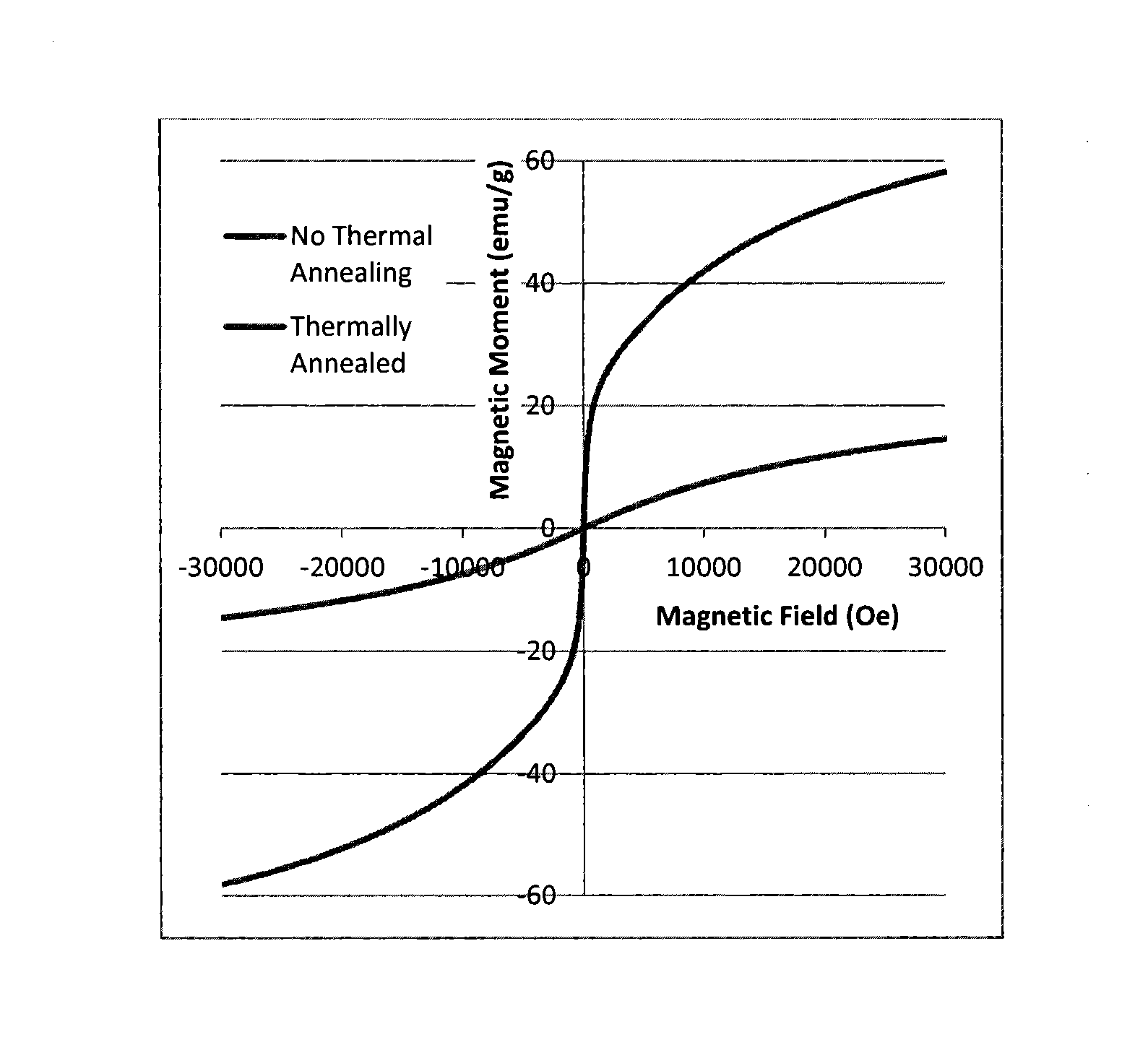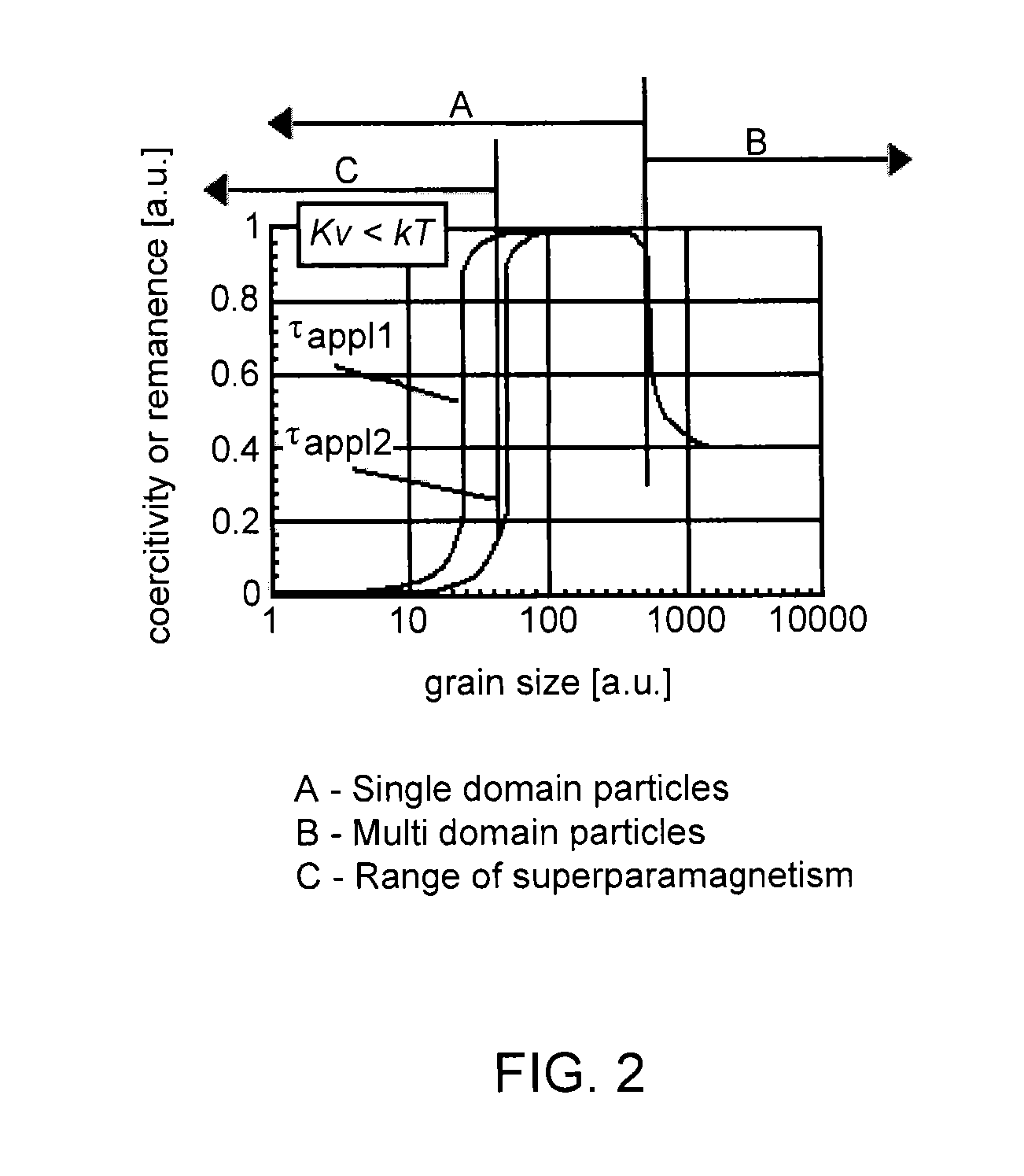Superparamagnetic iron cobalt ternary alloy and silica nanoparticles of high magnetic saturation and a magnetic core containing the nanoparticles
- Summary
- Abstract
- Description
- Claims
- Application Information
AI Technical Summary
Benefits of technology
Problems solved by technology
Method used
Image
Examples
example
Core / Shell Iron-Cobalt-Vanadium / Silica-Coated Nanoparticles
[0068]The nanoparticles were synthesized as follows:
[0069]Sodium borohydride (2.45 g) was dissolved in ethanol (90 mL). This sodium borohydride solution was added to a stirring solution of ethanol (105 mL) containing:
[0070]sodium hydroxide (0.102 g), tetraoctyalammonium bromide (2.362 g), iron dichloride tetrahydrate (2.181 g), cobalt dichloride hexahydrate (2.410 g), and vanadium trichloride (0.0683 g).
[0071]The reaction was allowed to stir for 10 minutes to insure full reaction had taken place.
[0072]It was then washed with a solution of ethanol and water (30 / 70 by volume, respectively) to remove the reaction byproducts.
[0073]The nanoparticles were dispersed in a solution of water (126 mL) and triethylamine (3.3 mL) This suspension was mixed thoroughly.
[0074]Tetraethyl orthosilicate (0.200 mL) dissolved in ethanol (78 mL) was then added and allowed to react for 20 mins
[0075]The product was washed with again with the solutio...
PUM
| Property | Measurement | Unit |
|---|---|---|
| Grain size | aaaaa | aaaaa |
| Temperature | aaaaa | aaaaa |
| Temperature | aaaaa | aaaaa |
Abstract
Description
Claims
Application Information
 Login to View More
Login to View More - R&D
- Intellectual Property
- Life Sciences
- Materials
- Tech Scout
- Unparalleled Data Quality
- Higher Quality Content
- 60% Fewer Hallucinations
Browse by: Latest US Patents, China's latest patents, Technical Efficacy Thesaurus, Application Domain, Technology Topic, Popular Technical Reports.
© 2025 PatSnap. All rights reserved.Legal|Privacy policy|Modern Slavery Act Transparency Statement|Sitemap|About US| Contact US: help@patsnap.com



